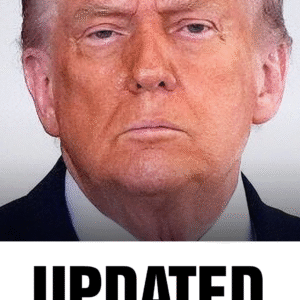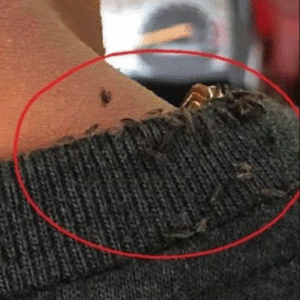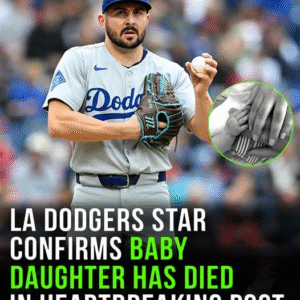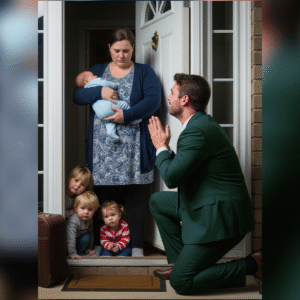CONSPIRACY THEORIES RESURFACE AS NEW WHITE HOUSE PHOTOGRAPH SPARKS FRESH SPECULATION ABOUT 2024 ASSASSINATION ATTEMPT
A recently released White House photograph of President Donald Trump has reignited intense online debate and conspiracy theories surrounding the assassination attempt that occurred during his 2024 presidential campaign. The image, officially published on Saturday, June 21st, has become the focal point of renewed social media speculation about the authenticity of the widely documented shooting incident that took place in Butler, Pennsylvania.
THE PHOTOGRAPH THAT SPARKED A THOUSAND THEORIES
The controversial image, taken from a side angle and showing President Trump wearing a Make America Great Again hat, provides a clear view of his right ear—the area that was reportedly injured during the July 2024 security incident. This visual detail has prompted various online commentators to examine the photograph for evidence related to the previous year’s events, leading to widespread discussion across multiple social media platforms.
The photograph’s timing and clarity have proven particularly provocative for those who harbor doubts about the official account of the assassination attempt. Social media users have seized upon the image as apparent evidence supporting their theories, with one X user writing: “Isn’t this the ear that apparently took a bullet?”
The image has gained significant traction across digital platforms, with thousands of users sharing and commenting on what they perceive as inconsistencies between the current appearance of Trump’s ear and what they believe should be visible evidence of a gunshot wound. This latest wave of speculation demonstrates the persistent nature of conspiracy theories in the digital age, where official photographs can become lightning rods for alternative interpretations of documented events.
SOCIAL MEDIA ERUPTS WITH SPECULATION
The response to the White House photograph has been swift and polarizing, with social media users expressing a wide range of reactions from skepticism to mockery to genuine concern. One user joked sarcastically: “Trump should forget the Nobel peace prize and go for the Nobel Prize in Physiology or Medicine for naturally regrowing an ear. It’s never been done before.”
The tone of many comments reflects a deep skepticism about the official narrative surrounding the assassination attempt. Another theorist claimed: “And all they do is show us his undamaged ear that was never struck by a bullet,” while others have made more dramatic assertions about the photograph’s implications.
One particularly bold social media user declared: “There is absolutely nothing to see on Trump’s ear now. No scar, nothing. That is really impossible and therefore totally unbelievable. Staged!” This sentiment has been echoed by numerous other users who point to the absence of visible scarring or other evidence of injury in the recent photograph.
The speculation has not been limited to casual observations. Another social media user noted: “That ear looks perfect, not a scratch or scar anywhere to be seen..” These detailed examinations of the photograph reflect the intensity with which some individuals are scrutinizing the image for evidence supporting their theories.
The viral nature of these discussions demonstrates how quickly alternative theories can gain momentum on social media platforms, particularly when they involve high-profile political figures and controversial events. The photograph has been shared thousands of times across various platforms, with each share potentially exposing new audiences to conspiracy theories about the assassination attempt.
THE BUTLER, PENNSYLVANIA INCIDENT: A RECAP
To understand the current speculation, it’s essential to review the well-documented events that occurred during Trump’s 2024 campaign. While delivering a speech at an open-air event near Butler, Pennsylvania, Trump was targeted by 20-year-old Thomas Matthew Crooks, who fired bullets at him using an AR-15-style rifle from the roof of a nearby building.
Despite eight rounds being fired at Trump at the time, only one struck him, hitting his right ear only. But, two other bullets critically injured a pair of audience members, whilst a third was tragically killed at the scene. The victim who lost his life was Corey Comperatore, a local firefighter and father who had attended the rally as a supporter.
Crooks was shot and killed by a member of the US Secret Service, moments after the assassination attempt. The entire incident was captured by multiple cameras and witnessed by thousands of attendees, creating extensive documentation of the events as they unfolded.
The assassination attempt had immediate and far-reaching consequences for the 2024 presidential campaign, leading to enhanced security protocols, extensive media coverage, and ongoing investigations into how the shooter was able to position himself within range of the candidate. The incident also sparked broader discussions about political violence and the safety of public officials in an increasingly polarized political environment.
The shooting occurred during a critical phase of the 2024 presidential campaign, when Trump was competing against Democratic candidate Kamala Harris for the presidency. The dramatic nature of the incident, combined with the iconic images of Trump’s bloodied face and defiant gesture following the shooting, made it one of the most memorable moments of the entire campaign cycle.
DEFENDERS CHALLENGE CONSPIRACY THEORIES
Not all social media users have embraced the conspiracy theories sparked by the White House photograph. Many have responded with facts and logic to counter the speculation, pointing to the extensive documentation of the assassination attempt and the tragic consequences that resulted from it.
One defender of the official account wrote: “How exactly was it faked in an outdoor setting with 1000’s of witnesses and dozens of cameras. One of those cameras picked up the bullet in mid air.” This comment references the photographic evidence that captured the moment of the attack, including remarkable images that appeared to show a bullet in flight.
The presence of thousands of witnesses at the outdoor rally has been a consistent point raised by those challenging conspiracy theories. The public nature of the event, combined with extensive media coverage and multiple camera angles, makes it difficult to explain how such an incident could have been staged without detection.
Another user penned: “This man came within inches of getting his head blown off and you say stupid sh** like this.” This emotional response reflects the frustration many feel when confronted with theories that minimize or dismiss the seriousness of what occurred.
The most poignant responses have focused on the very real human cost of the assassination attempt. One user angrily wrote: “What you’re insinuating is horrible. Trump was nearly killed. Cory Compentore was a father and a firefighter who was murdered by that whacko. Suggesting this was a setup is low. Next time, please think before you post something.. Sheesh.”
This reference to Corey Comperatore’s death highlights one of the most compelling arguments against conspiracy theories about the incident. The tragic loss of life serves as a sobering reminder of the real consequences of the shooting and the impact it had on actual families and communities.
MEDICAL CONSIDERATIONS AND HEALING PATTERNS
The speculation surrounding Trump’s ear appearance in the recent photograph raises important questions about wound healing and the visible evidence of injuries over time. Medical experts have previously noted that ear injuries, particularly those involving soft tissue damage, can heal with varying degrees of visible scarring depending on numerous factors.
The ear’s unique anatomy, including its blood supply and tissue composition, can contribute to healing patterns that may not always result in clearly visible scarring. Professional medical treatment, including potential cosmetic procedures or advanced wound care techniques, can further minimize the appearance of scars over time.
Additionally, photographic factors such as lighting, angle, resolution, and even digital processing can significantly affect the visibility of subtle scarring or other healing evidence. Official White House photography often involves professional lighting and editing techniques that may not highlight minor imperfections or subtle details.
The healing process for gunshot wounds can vary dramatically based on factors including the trajectory of the bullet, the extent of tissue damage, the quality of immediate medical care, and individual healing characteristics. Some injuries that initially appear severe may heal with minimal visible evidence, while others may leave permanent scarring.
It’s also worth noting that nearly a year has passed since the assassination attempt occurred, providing substantial time for healing and potential medical interventions that could affect the appearance of any resulting scars. The passage of time, combined with access to high-quality medical care, could explain the current appearance of Trump’s ear in official photographs.
THE PERSISTENCE OF CONSPIRACY THEORIES IN DIGITAL AGE
The renewed speculation about the assassination attempt reflects broader challenges related to information verification and conspiracy theory propagation in the digital age. Social media platforms have become powerful venues for both legitimate discussion and unfounded speculation about significant political events, creating ongoing challenges for accurate information dissemination.
Since the assassination attempt, bizarre conspiracy theories have emerged as people began to insist that the shooting was staged, with some believing Trump’s ear was never actually injured. These theories have persisted despite extensive documentation and investigation of the incident by multiple law enforcement agencies.
The ability of alternative theories to gain traction and maintain momentum on social media platforms illustrates the complex relationship between official information, media coverage, and public perception in the contemporary information environment. Even events with extensive documentation and multiple witness accounts can become subjects of speculation and reinterpretation.
This phenomenon has significant implications for political discourse, public trust in institutions, and the broader information ecosystem. The persistence of unfounded theories about well-documented events highlights ongoing challenges related to media literacy and critical thinking skills among the general public.
The viral nature of conspiracy theories also demonstrates how quickly misinformation can spread and evolve in the digital age. A single photograph can spark thousands of comments and shares, potentially reaching millions of people with alternative interpretations of documented events.
POLITICAL IMPLICATIONS AND BROADER CONTEXT
The ongoing speculation about the assassination attempt occurs within a broader context of political polarization and declining trust in institutions that characterizes much of contemporary American political discourse. Conspiracy theories about major political events have become increasingly common, reflecting deeper skepticism about official narratives and institutional authority.
The persistence of these theories also highlights the challenges facing political leaders and institutions in maintaining public trust and credibility in an era of intense scrutiny and alternative information sources. Every official photograph, statement, or appearance becomes subject to detailed analysis and potential reinterpretation by skeptical audiences.
For Trump’s political opponents, the conspiracy theories may serve to delegitimize what many view as a tragic but politically advantageous event that generated sympathy and support for his campaign. For his supporters, the theories may reflect broader distrust of media coverage and official accounts of events involving their preferred candidate.
The polarized nature of contemporary American politics means that even non-political events like medical treatment and healing processes can become subjects of political interpretation and debate. This dynamic makes it increasingly difficult to maintain shared understanding of basic facts about significant political events.
IMPACT ON VICTIMS AND FAMILIES
One of the most troubling aspects of ongoing conspiracy theories about the assassination attempt is their potential impact on the families of those who were killed or injured during the incident. Corey Comperatore’s family, in particular, has had to endure not only the tragic loss of their loved one but also speculation that questions the very reality of the events that took his life.
The promotion of theories suggesting the assassination attempt was staged effectively dismisses the suffering of those who were actually harmed during the incident. This includes not only the fatality and injuries that occurred but also the trauma experienced by thousands of witnesses who feared for their safety during the shooting.
The psychological impact on survivors and witnesses of having their experiences questioned or dismissed cannot be understated. For individuals who lived through a terrifying and traumatic event, encountering theories that suggest their experiences were somehow fabricated can compound existing trauma and undermine their sense of reality.
Family members of victims may also find themselves in the difficult position of defending the reality of their loss against those who promote alternative theories. This additional burden comes at a time when they are already dealing with grief and the practical consequences of their tragedy.
RESPONSIBILITY IN INFORMATION SHARING
The current episode highlights important questions about individual and collective responsibility in sharing and evaluating information about significant political events. While public scrutiny of official information can serve important democratic functions, there is a meaningful distinction between legitimate questions and unfounded speculation.
Responsible information consumption requires consideration of multiple sources of evidence, expert opinions, and the broader context surrounding events. In the case of the assassination attempt, this includes witness testimony, photographic and video evidence, medical reports, law enforcement investigations, and official statements from relevant authorities.
Citizens and media consumers should also consider the motivations and expertise of those promoting alternative theories, as well as the potential consequences of spreading unverified information about serious events. The amplification of unfounded theories about assassination attempts can have serious implications for political discourse, public safety, and social cohesion.
Social media platforms face ongoing challenges in balancing free expression with the need to prevent the spread of harmful misinformation. The current case illustrates the difficulty of moderating content that doesn’t clearly violate platform policies but may contribute to harmful conspiracy theories.
THE ROLE OF OFFICIAL COMMUNICATION
The White House’s decision to release the photograph that sparked the current speculation raises questions about the role of official communication in managing public perception and addressing conspiracy theories. While transparency in government communication is generally beneficial, the unintended consequences of official images and statements must also be considered.
Government officials and institutions face the challenging task of maintaining transparency while avoiding actions that might inadvertently fuel conspiracy theories or provide ammunition for those seeking to promote alternative narratives. This balance becomes particularly difficult when dealing with events that have already become subjects of speculation and conspiracy theories.
The timing and context of official communications can significantly impact how they are received and interpreted by different audiences. In the current case, the routine release of a presidential photograph became a catalyst for renewed speculation about events from nearly a year ago.
This dynamic suggests the need for careful consideration of how official communications might be interpreted and potentially misused by those promoting conspiracy theories. However, it also raises concerns about whether government institutions should modify their normal communication practices in response to conspiracy theorists.
LOOKING FORWARD: LESSONS AND IMPLICATIONS
The renewed speculation sparked by the White House photograph offers several important lessons about information literacy, conspiracy theory propagation, and the challenges of maintaining accurate public discourse in the digital age. These lessons extend beyond the specific case of the assassination attempt to broader questions about how societies can maintain shared understanding of basic facts.
Educational initiatives focused on media literacy and critical thinking skills may help individuals better evaluate information and resist the appeal of unfounded conspiracy theories. Such programs could include training in source evaluation, evidence assessment, and the identification of logical fallacies and misleading arguments.
Technology platforms may need to continue evolving their approaches to managing the spread of misinformation while preserving legitimate discourse and free expression. This could include improved algorithmic detection of conspiracy content, enhanced fact-checking capabilities, and better user education about information quality.
Government institutions and officials may need to develop more sophisticated approaches to communication that anticipate potential misinterpretation while maintaining necessary transparency. This could include proactive fact-checking, context provision, and rapid response capabilities for addressing misinformation.
The persistence of conspiracy theories about well-documented events also suggests the need for ongoing research into the psychological and social factors that make individuals susceptible to such theories. Understanding these factors could inform more effective approaches to prevention and intervention.
CONCLUSION: THE ONGOING CHALLENGE OF TRUTH IN POLITICS
The controversy surrounding the recent White House photograph of President Trump illustrates the enduring challenges of maintaining accurate public discourse about significant political events in the digital age. Despite extensive documentation of the assassination attempt and its consequences, conspiracy theories continue to evolve and spread, fueled by selective interpretation of evidence and deep-seated skepticism about official accounts.
The current episode demonstrates how even routine government communications can become flashpoints for conspiracy theories and political debate. A single photograph, intended as standard documentation of presidential activities, has sparked thousands of comments and renewed speculation about events that occurred nearly a year ago.
The human cost of these conspiracy theories cannot be ignored. The families of those killed and injured in the assassination attempt must continue to deal with speculation that questions the reality of their experiences and losses. The promotion of unfounded theories about tragic events adds insult to injury for those who have already suffered tremendously.
Moving forward, American society faces the challenge of finding ways to maintain healthy skepticism and democratic accountability while resisting the appeal of unfounded conspiracy theories that undermine shared understanding of basic facts. This balance is essential for the functioning of democratic institutions and the maintenance of social cohesion.
The White House photograph controversy serves as a reminder that in the digital age, every piece of official communication becomes subject to intense scrutiny and potential reinterpretation. While such scrutiny can serve important democratic purposes, it also creates opportunities for the spread of misinformation and the erosion of public trust in institutions.
Ultimately, the responsibility for maintaining accurate public discourse rests with all citizens, who must commit to evaluating information carefully, considering multiple perspectives, and prioritizing evidence-based reasoning over speculation and conspiracy theories. Only through such collective commitment can democratic societies hope to navigate the complex information challenges of the modern era while honoring the memory of those who have been harmed by real acts of political violence.




